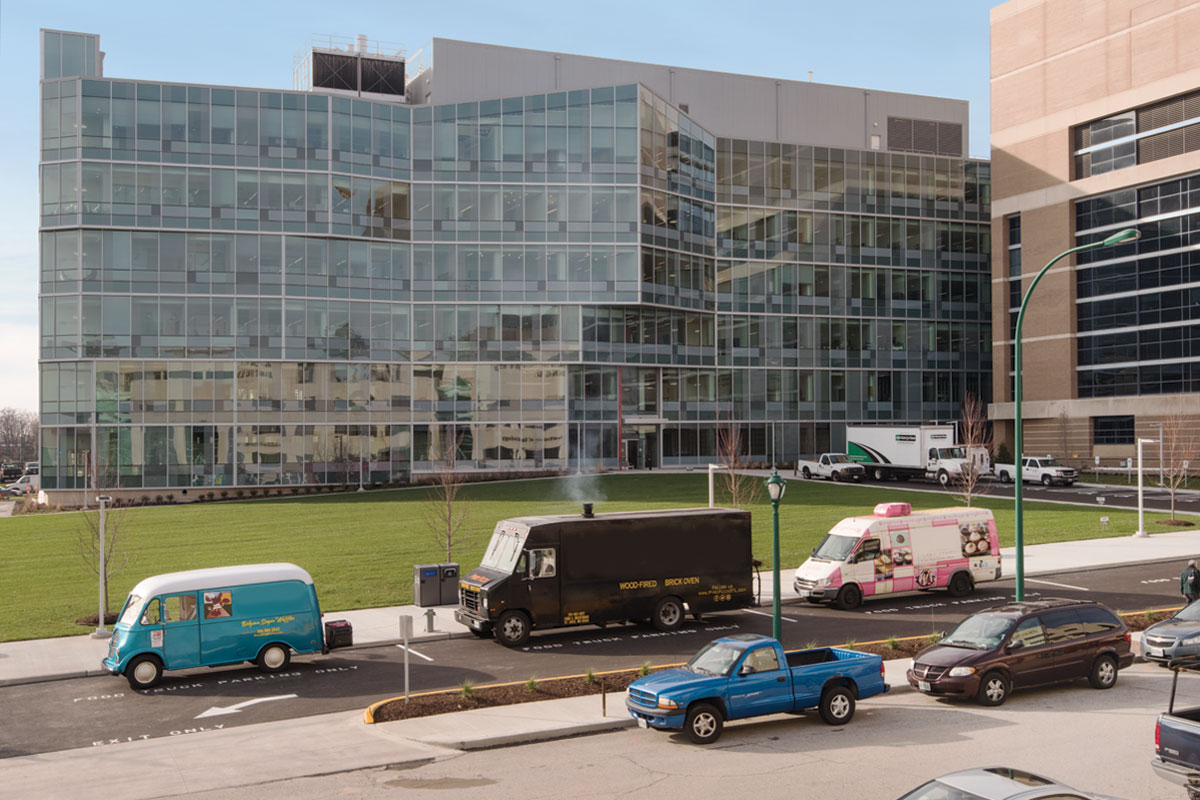
A new building dedicated to interdisciplinary research on some of the most complex problems in human biology is now open on the Medical Campus. The collaborative, state-of-the-art environment will support rapidly changing scientific techniques and the explosive advancement of genetics and genomics.
The six-story facility brings together groups of investigators and adds 138,000 square feet of highly flexible, open labs.
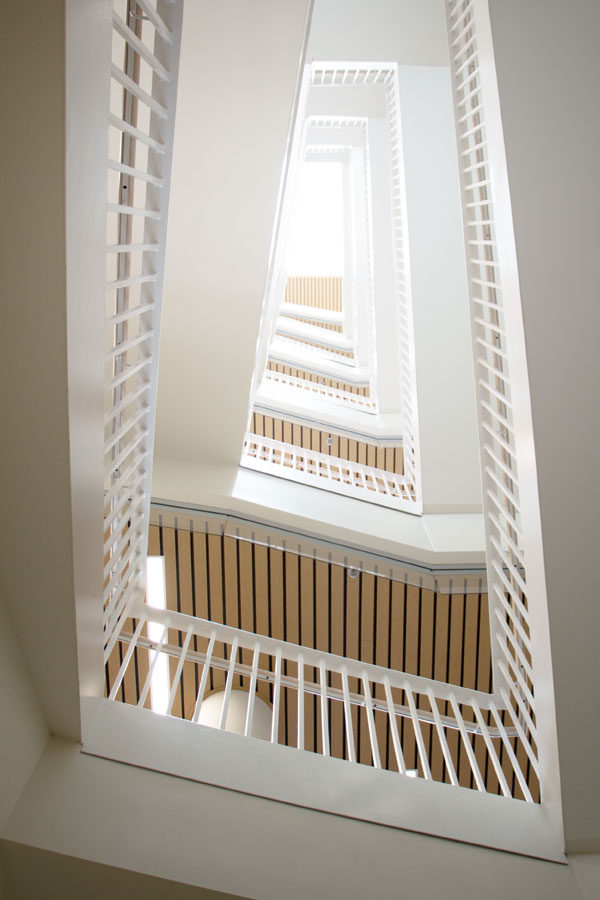
Designed for LEED Silver certification, the $81.1-million building replaces some of the older, less efficient research lab spaces. Built for investigator comfort, labs in the building conveniently are located adjacent to office space, separated only by glass walls. This gives researchers the flexibility to step away, take notes, make journal entries, or even have a snack, while still monitoring activities on the bench. Communal spaces, like conference rooms, kitchens and break areas, are centralized and easily accessible.
To encourage cross-disciplinary dialogue, the design also incorporates “neighborhoods” on each floor — where researchers working on dissimilar projects might be gathered into smaller clusters. In one large lab, for example, researchers studying male infertility will work alongside scientists investigating autism and others studying diabetes and metabolism, all in mice.
Researchers making the move include those from: the Department of Genetics; the Center for Genome Sciences & Systems Biology; the Division of Oncology in the Department of Medicine; the Center for Regenerative Medicine in the Department of Developmental Biology; and Mallinckrodt Institute of Radiology’s (MIR) Optical Radiology Lab and Molecular Imaging Center. Until now, the 16 faculty members in the genetics department have been working in six different locations.
The building will house two new centers:
The Center for Multiple Myeloma Nanotherapy, also part of MIR, will develop therapies for multiple myeloma, a cancer of immune cells in bone marrow. The National Cancer Institute awarded $13.7 million in research support.
The Center for Cellular Imaging, established by the departments of Neuroscience and of Cell Biology & Physiology, will serve as a shared technology resource for the medical school community. The center will facilitate the use of multi-scale cellular imaging technologies to investigate, at unprecedented resolution, the 3-D structure and dynamic behavior of biological systems.
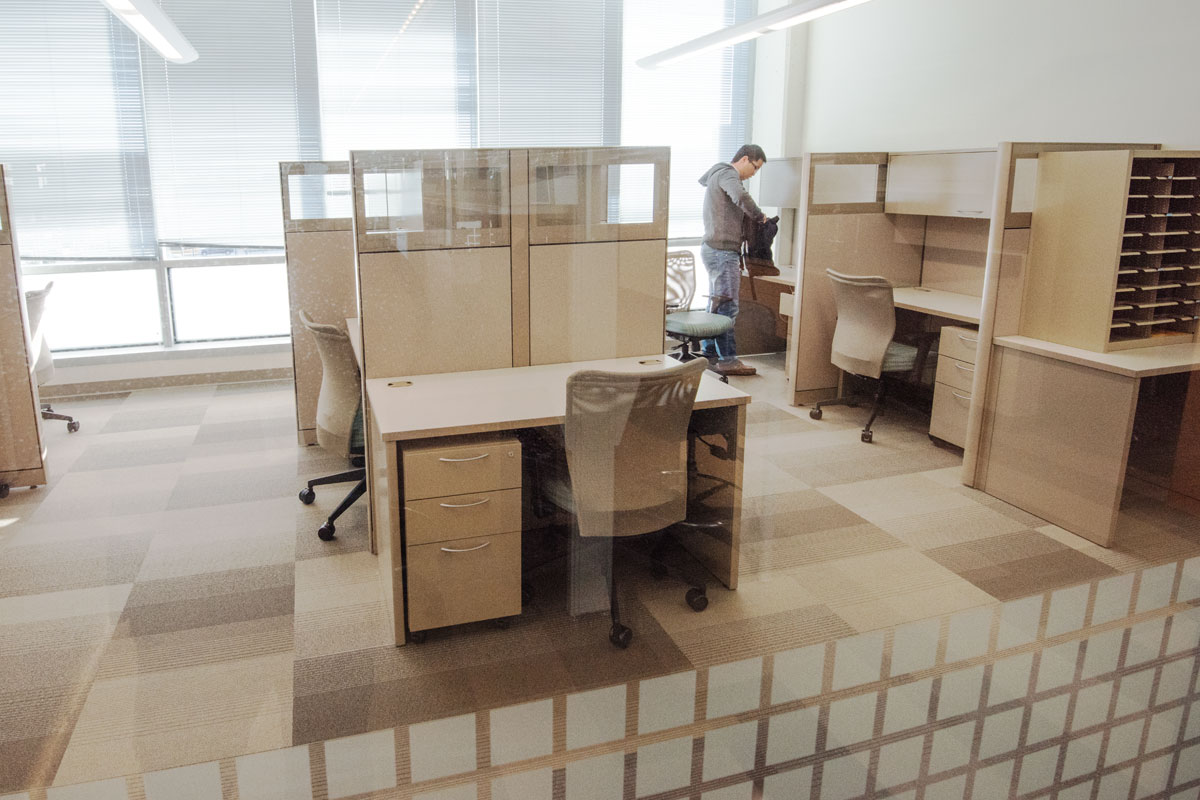
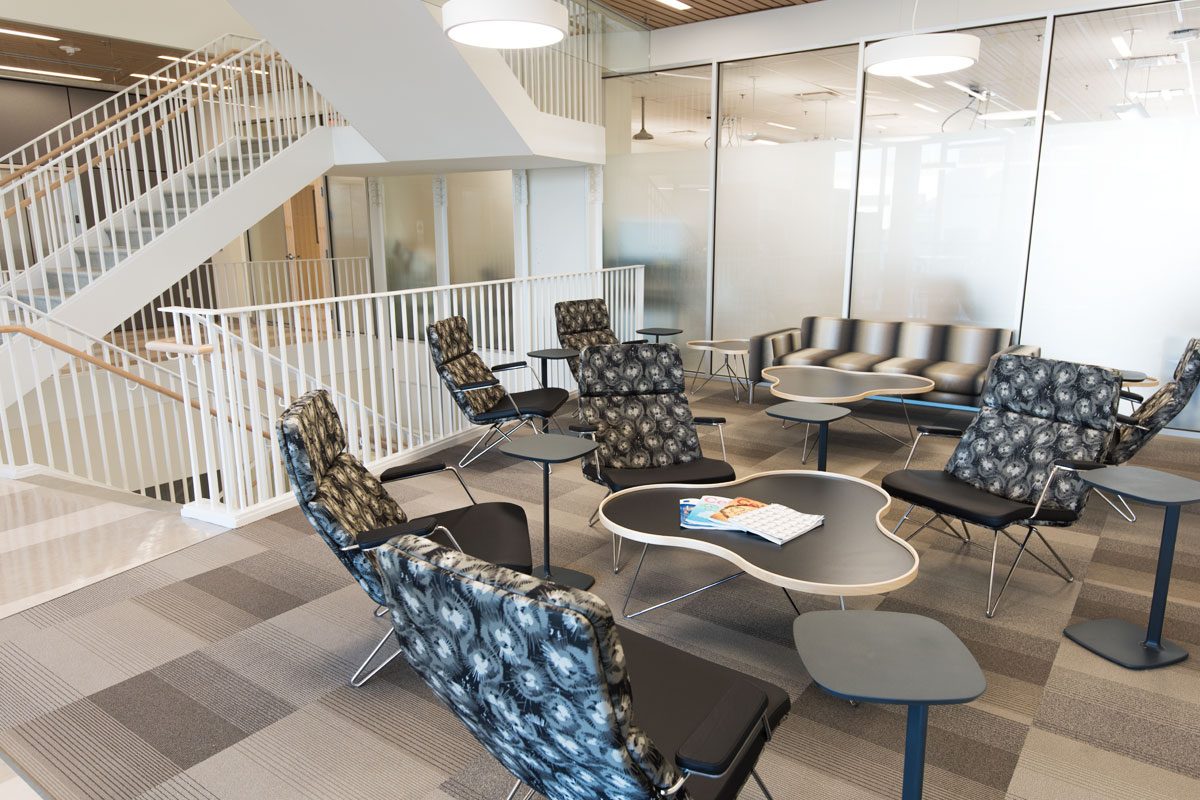
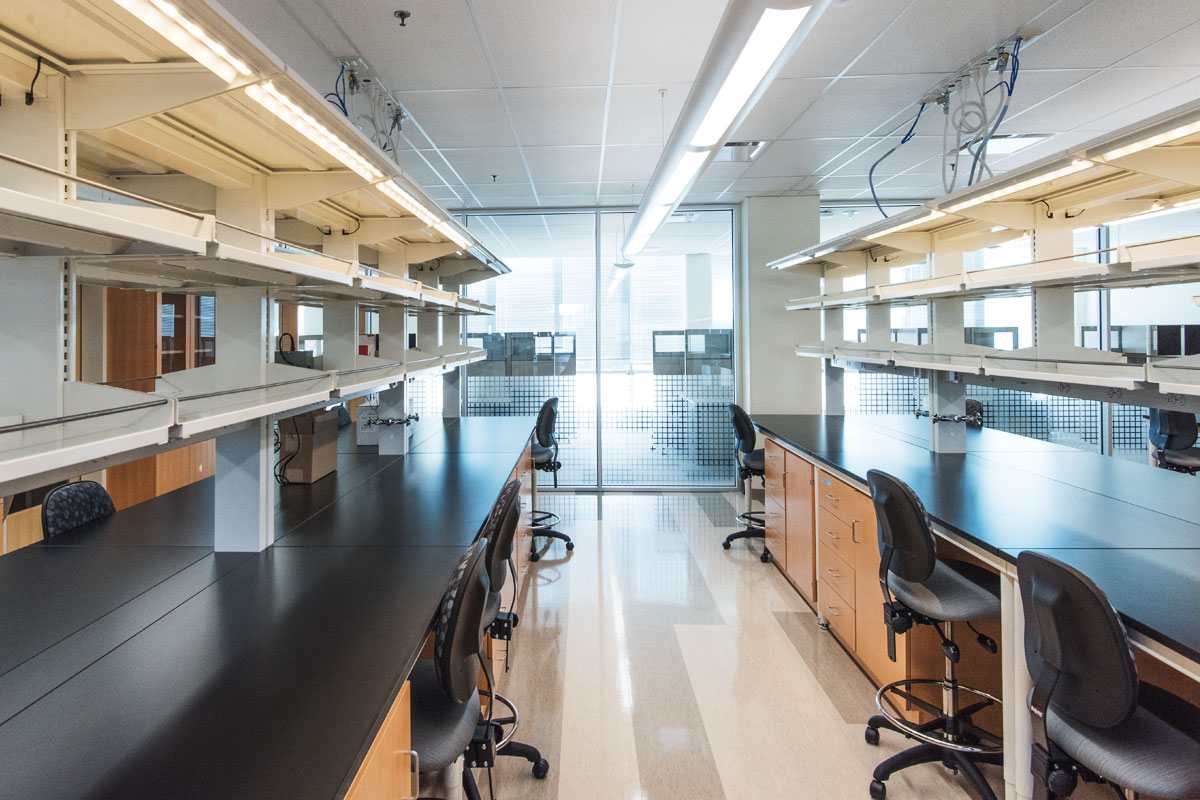
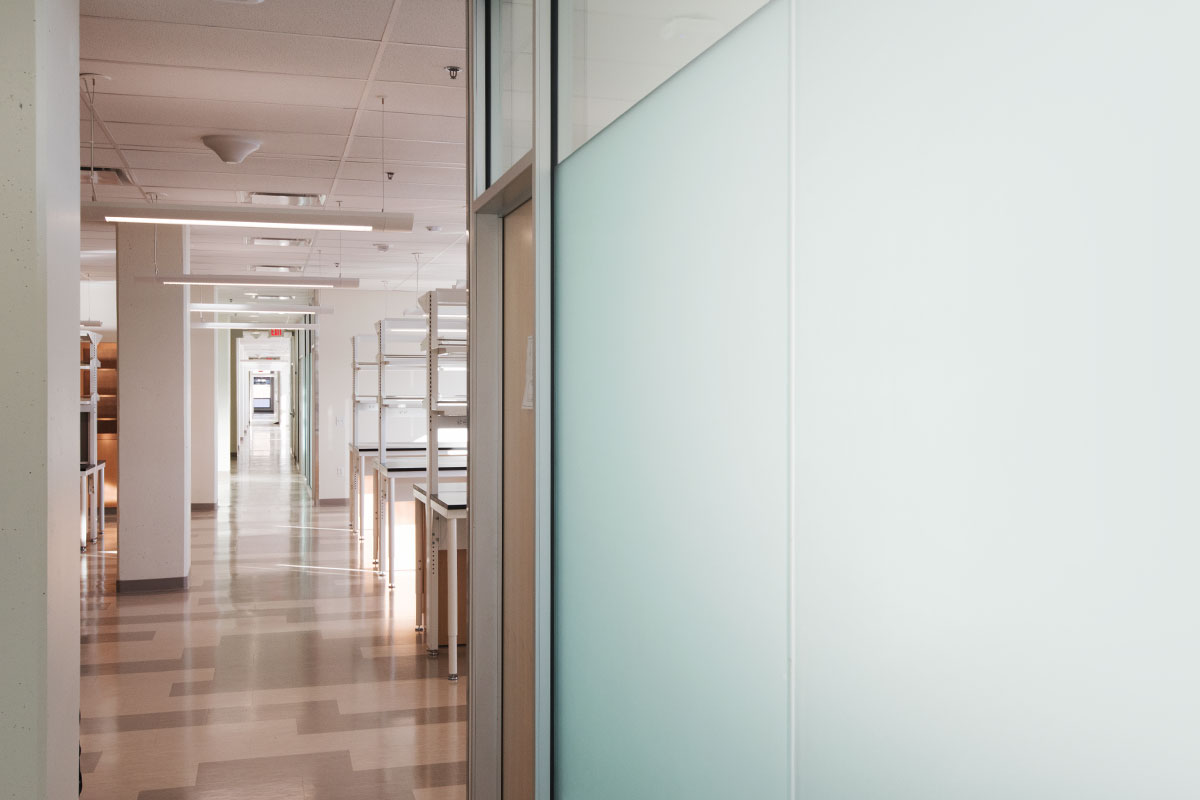
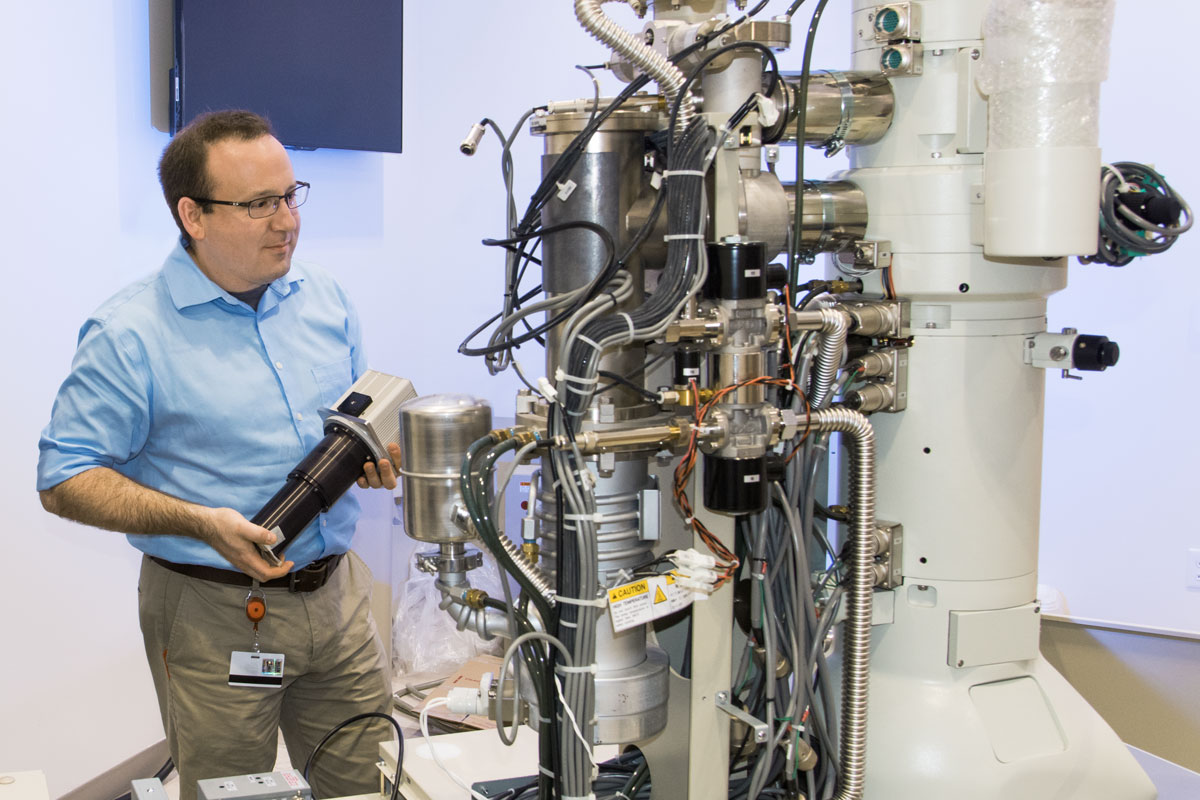
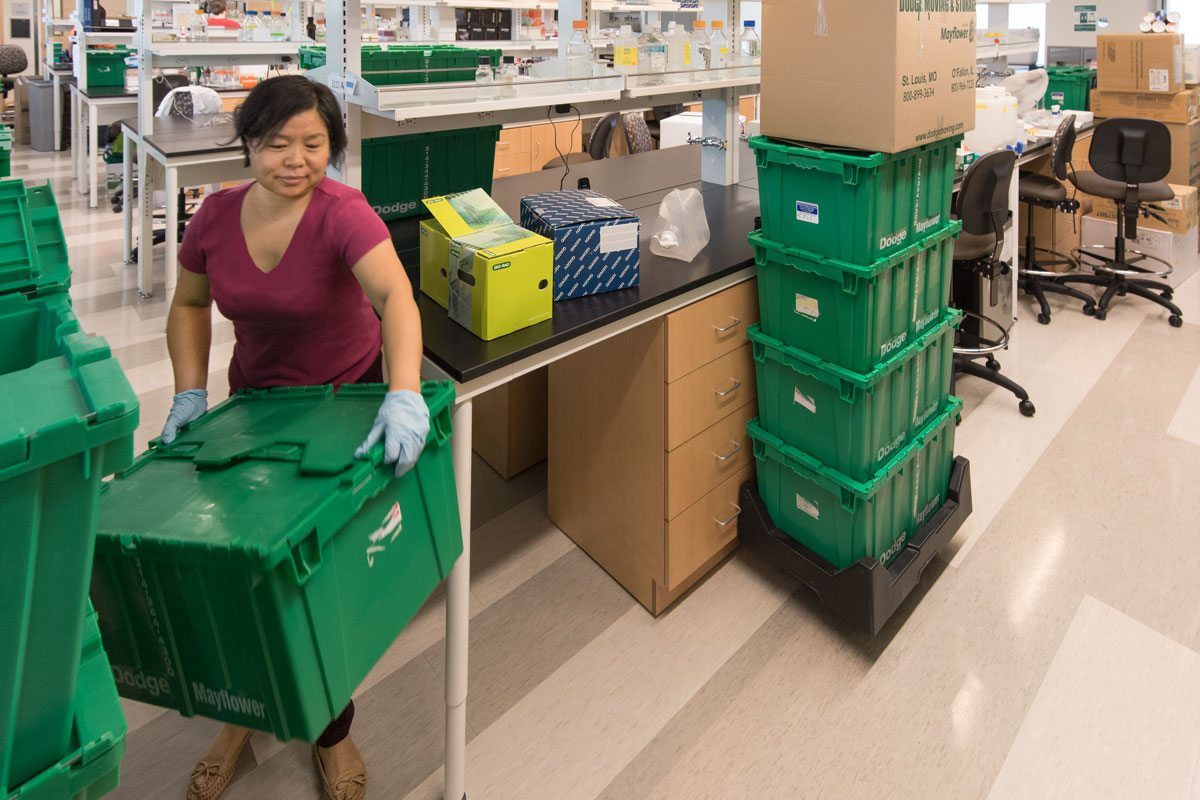
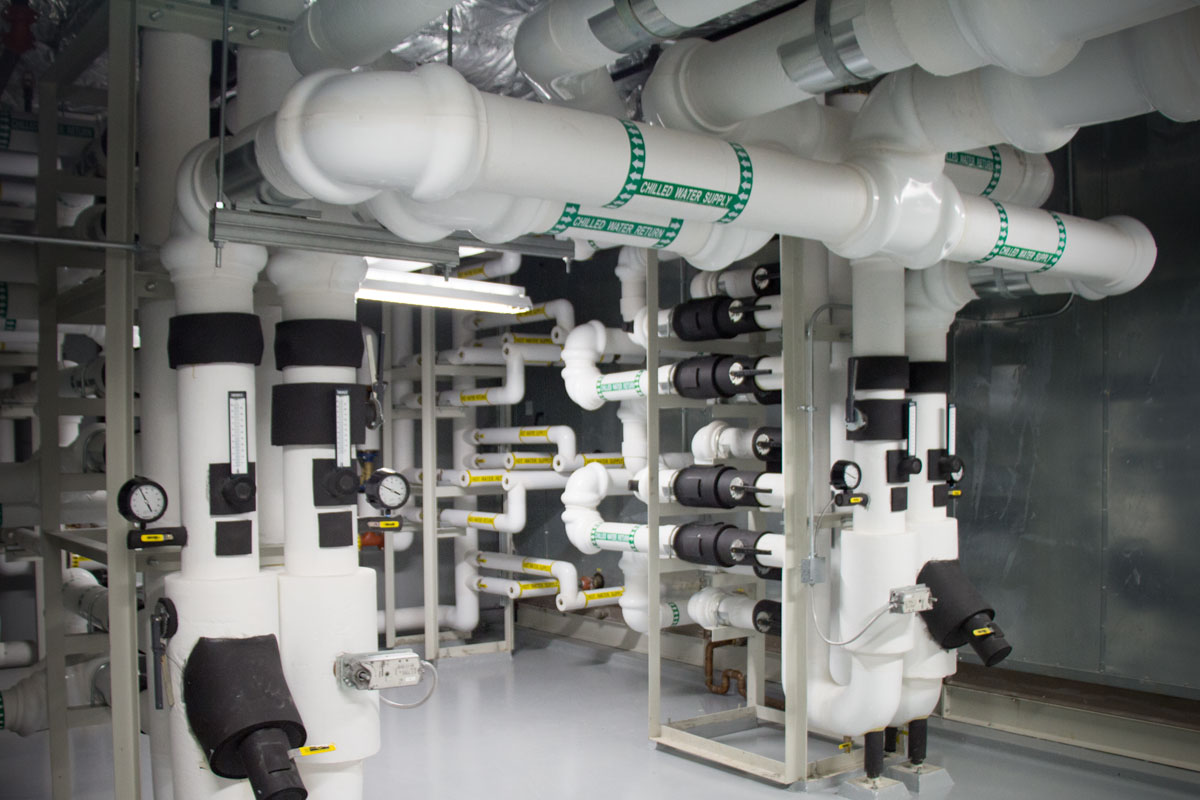
Published in the Winter 2015-16 issue


